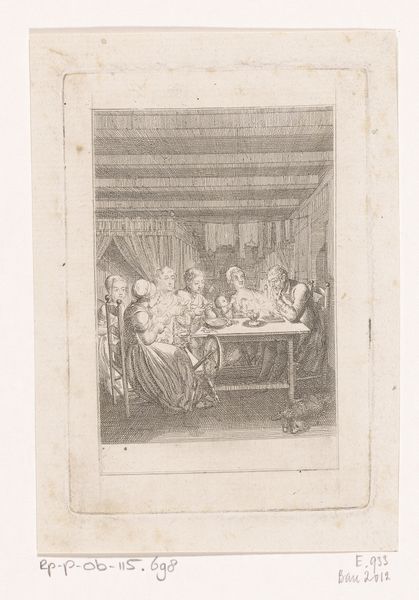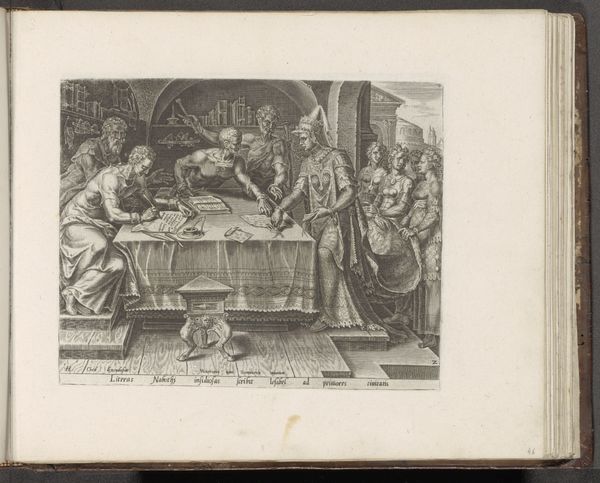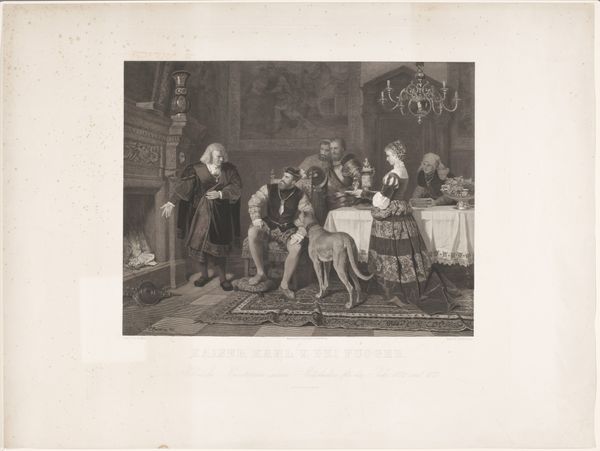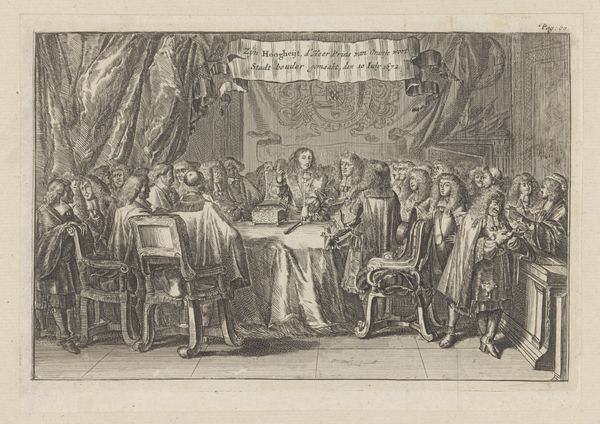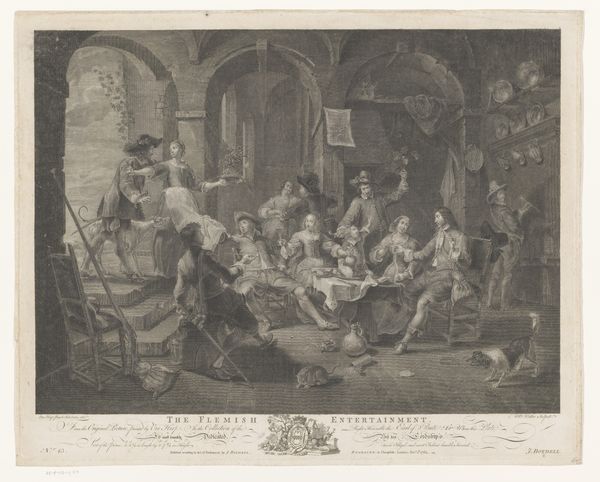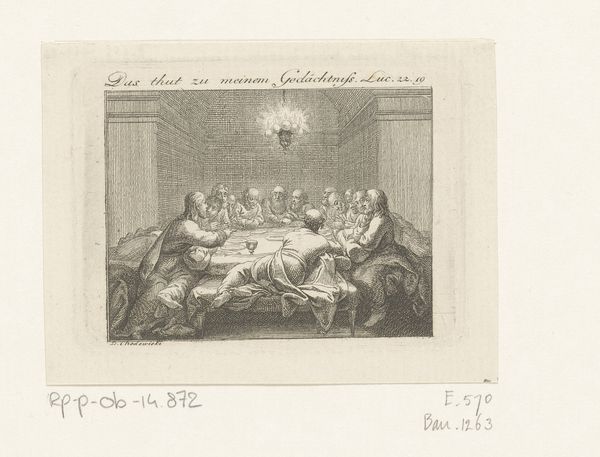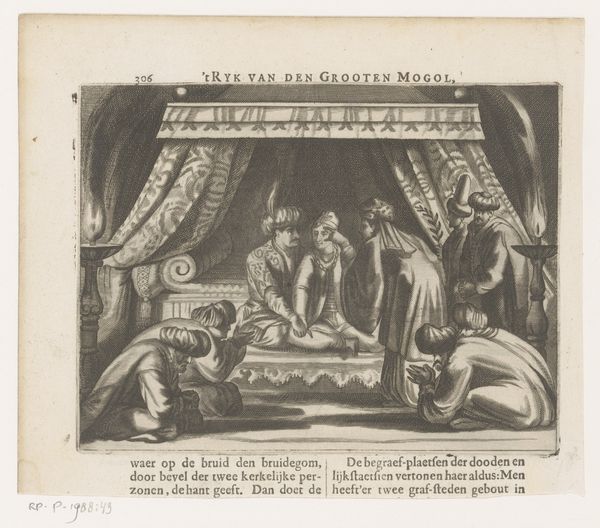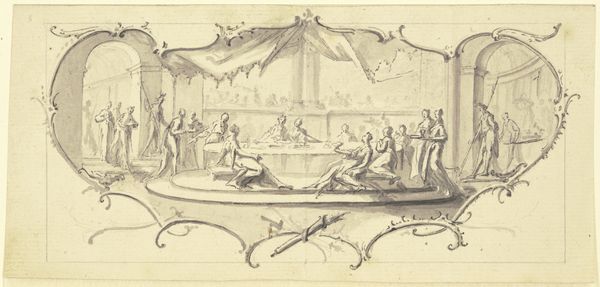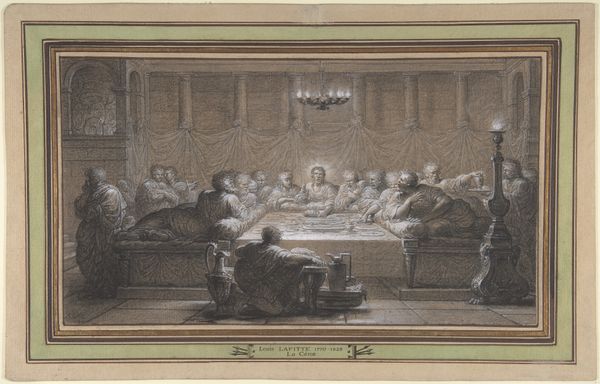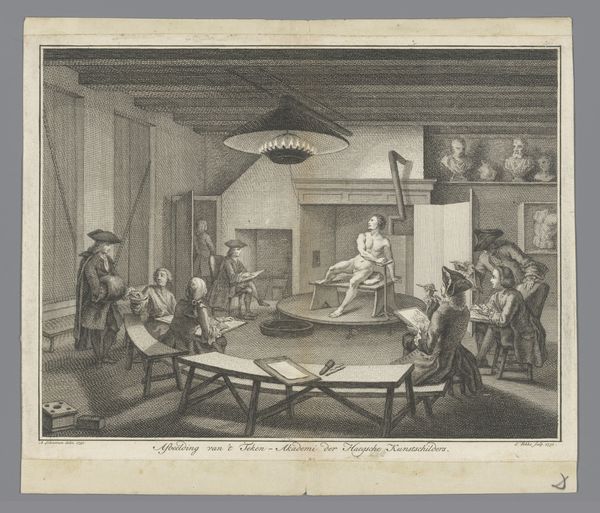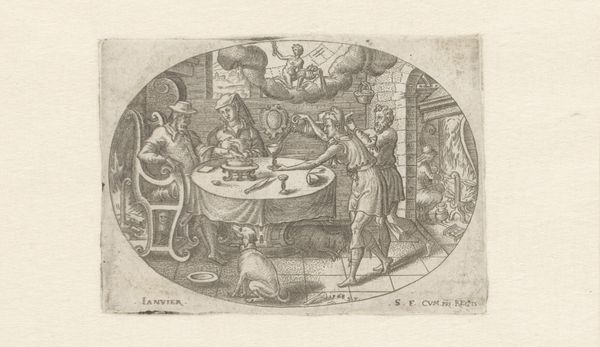
Dimensions: 80 mm (height) x 96 mm (width) (plademaal)
Terkel Kleve made this print of 'Nadveren' using etching, a process that democratized image-making in the 18th century. The matrix was likely a copper plate; the artist would have covered this with a waxy ground, scratched an image through it, then bathed the plate in acid. This biting process created fine lines that hold ink, which is then transferred to paper through a press. The telltale sign of an etching is the crisp, precise lines that define form and shadow here. Etching enabled the wider distribution of images. Compared to painting, printmaking allowed for multiples, making art more accessible and connected to an expanding marketplace. The work also speaks to shifts in religious practice, the rise of personal devotion, and the evolving role of art within society. By considering the means of production, we gain a fuller appreciation of the artwork's place in the world, its contribution to visual culture, and the changing dynamics of labor and consumption.
Comments
No comments
Be the first to comment and join the conversation on the ultimate creative platform.
